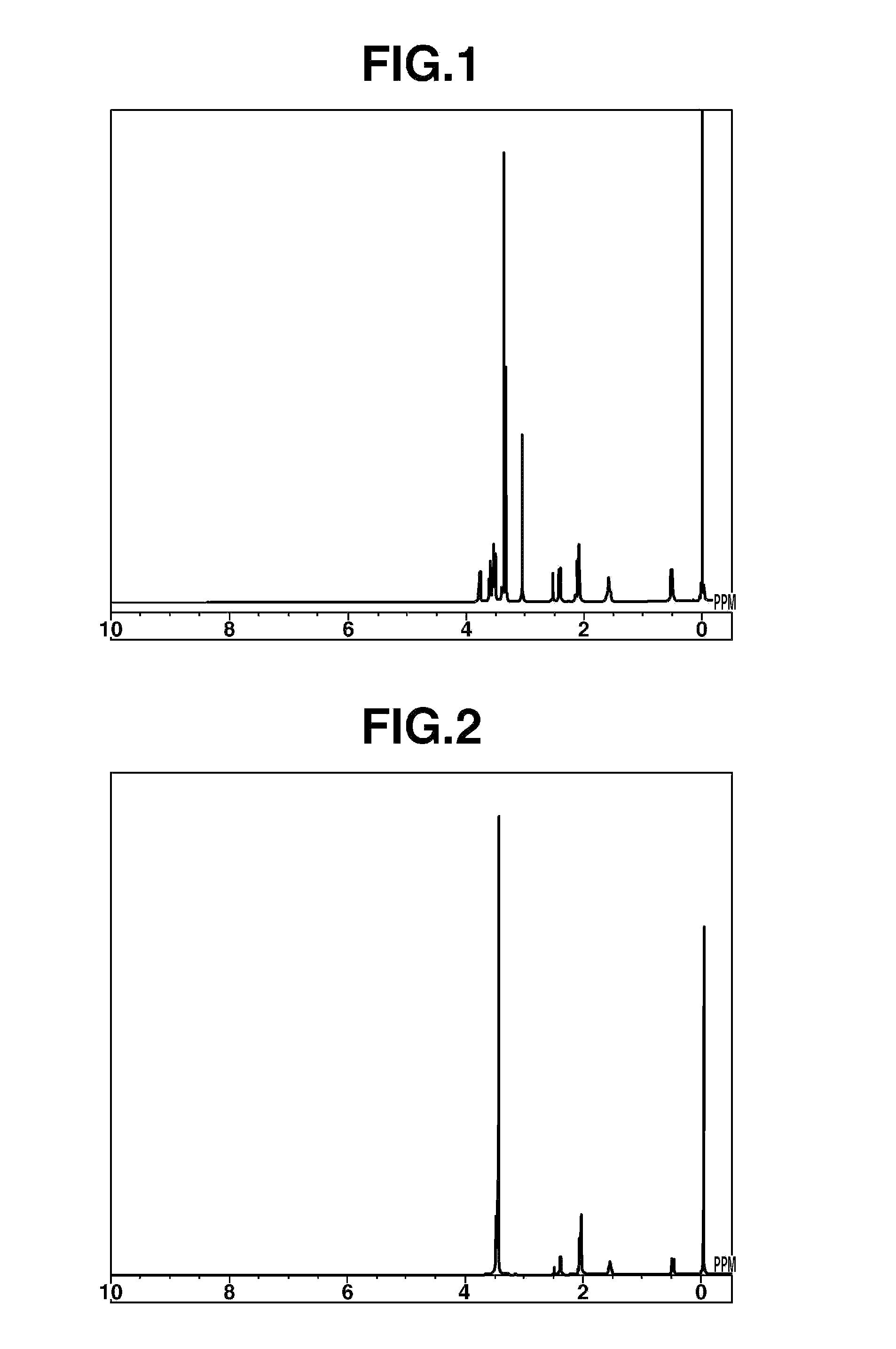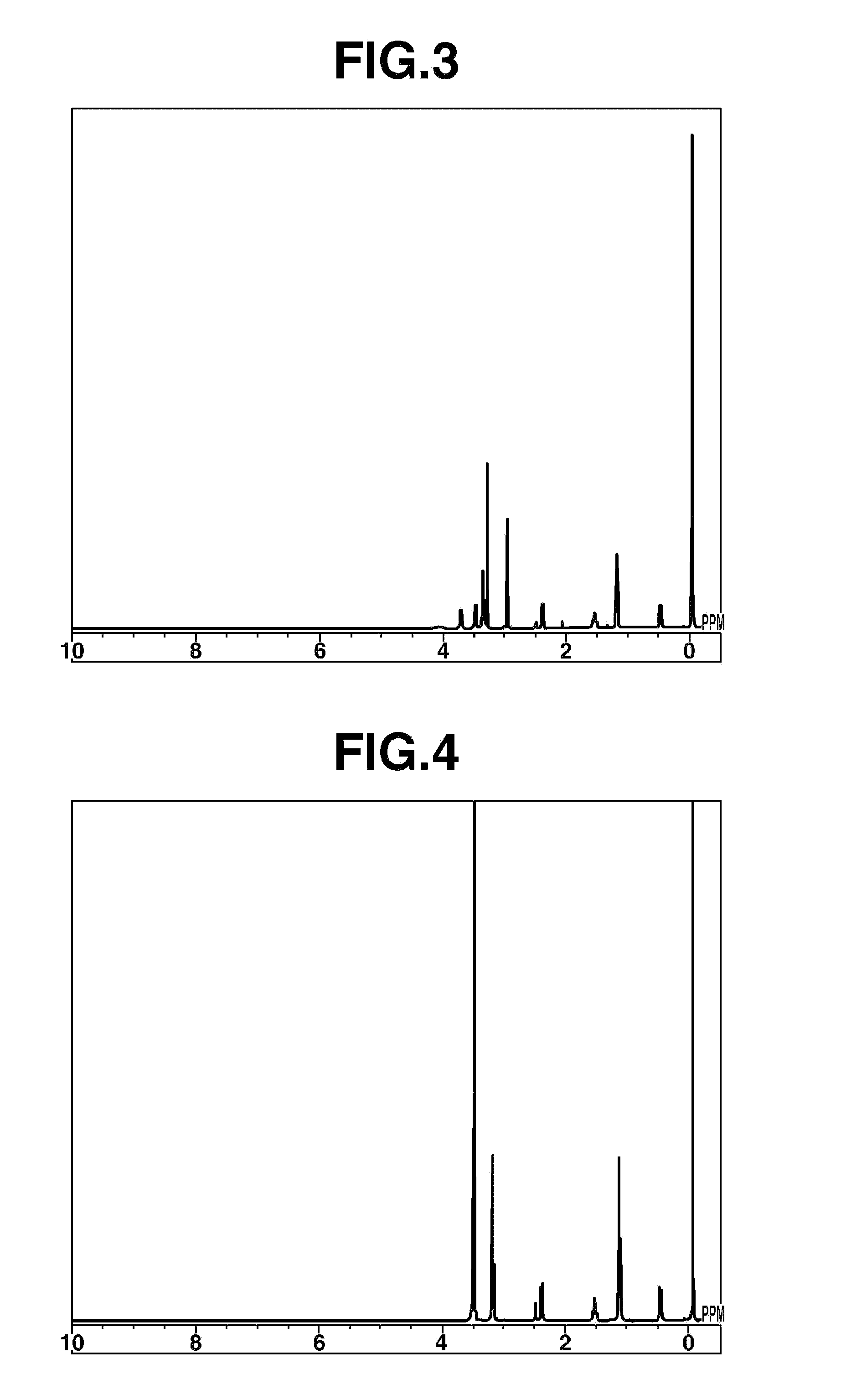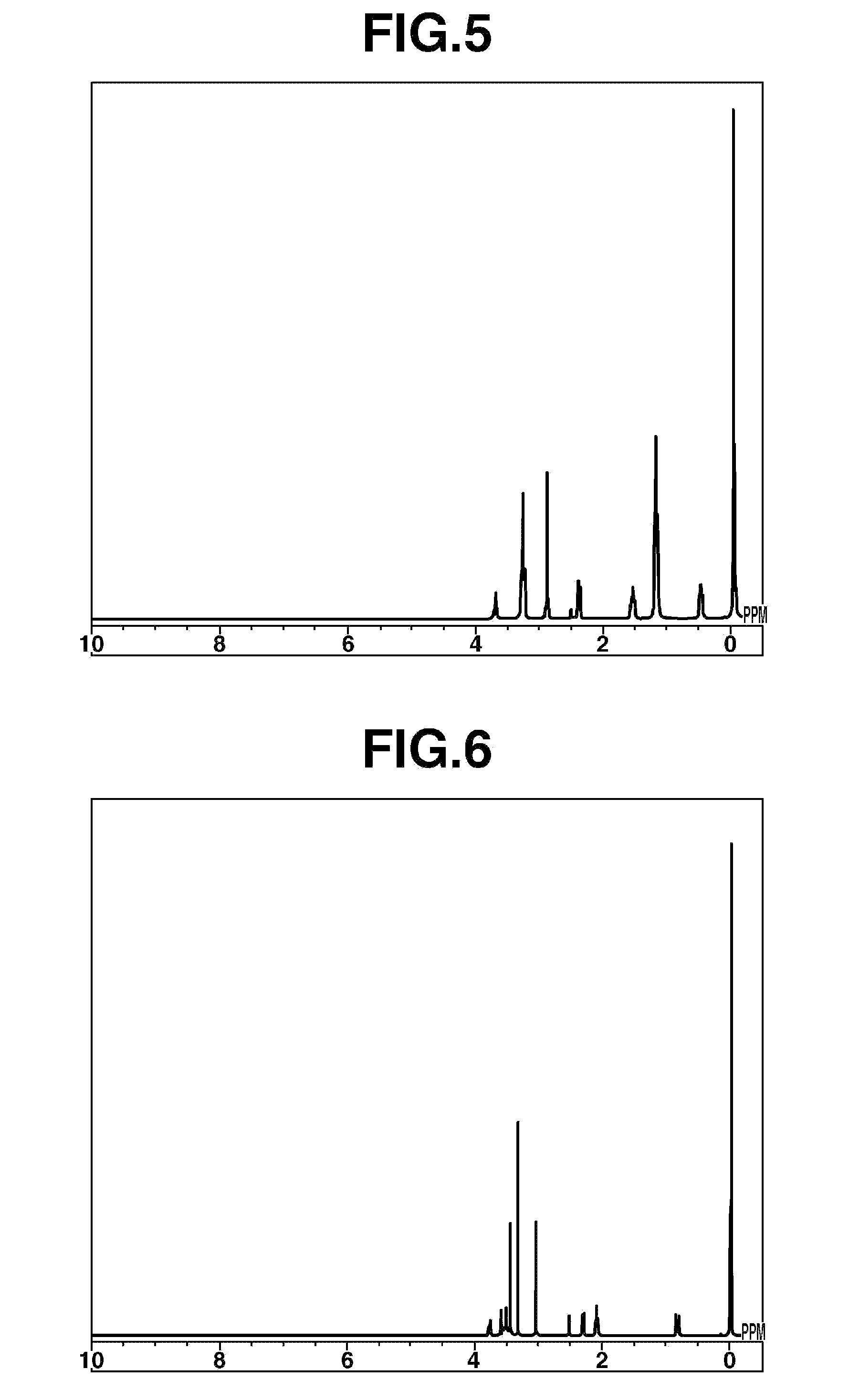Electrolyte salt and electrolyte for electricity storage device, and electricity storage device
a technology of electrolyte salt and electricity storage device, which is applied in the direction of liquid electrolytic capacitor, electrolytic capacitor, electrochemical generator, etc., can solve the problems of environmental impact, wide potential window, and unknown electrolyte salts which are halogen-free, and achieve wide potential window, small environmental impact, and electrochemical stability
- Summary
- Abstract
- Description
- Claims
- Application Information
AI Technical Summary
Benefits of technology
Problems solved by technology
Method used
Image
Examples
example 1
Synthesis of Compound 1
[0087]Compound 1 of the following formula was synthesized.
[0088]Pyrrolidine (Wako Pure Chemical Industries, Ltd.), 1.51 parts by weight, and 2-methoxyethyl chloride (Kanto Chemical Co., Inc.), 1.00 part by weight, were mixed together and reacted for 1 hour under refluxing. Following the reaction, the reaction mixture was separated into two phases, then left to cool for a while, whereupon the bottom phase solidified. The top phase alone was collected by decantation, and purification was carried out by vacuum distillation. This distillation gave 0.96 part by weight of the target substance N-2-methoxyethylpyrrolidine (boiling point, 76° C.; vapor pressure, 45 mmHg) in a yield of 70%.
[0089]Next, 1.00 part by weight of the resulting N-2-methoxyethylpyrrolidine was mixed with a two-fold volume of toluene (Wako Pure Chemical Industries, Ltd.), the mixture was placed in an autoclave, and the interior of the system was flushed with nitrogen. The system was closed, afte...
example 2
Synthesis of Compound 2
[0091]Compound 2 of the following formula was synthesized.
[0092]Fifty parts by weight of 1,4-dibromobutane (Tokyo Chemical Industry Co., Ltd.) and 38.4 parts by weight of potassium carbonate (Wako Pure Chemical Industries, Ltd.) were mixed with 97.5 parts by weight of isopropanol (Kanto Chemical Co., Inc.) and stirred to effect dissolution, following which 16.5 parts by weight of pyrrolidine was added under stirring. This mixture was heated and reacted for 7 hours under refluxing. The solids were separated off by vacuum filtration, following which the filtrate was vacuum concentrated, thereby giving a residue having a deep wine-red color. This residue was recrystallized, first from acetonitrile, then from an acetonitrile-tetrahydrofuran mixed solvent, giving 32 parts by weight of 1,1′-spirobipyrrolidinium bromide as a white solid.
[0093]Next, aside from using 1,1′-spirobipyrrolidinium bromide instead of N-2-methoxyethyl-N-methylpyrrolidinium chloride, Compound ...
example 3
Synthesis of Compound 3
[0094]Compound 3 of the following formula was synthesized.
[0095]Diethylamine (Kanto Chemical Co., Inc.), 71 parts by weight, and 2-methoxyethyl chloride (Kanto Chemical Co., Inc.), 88 parts by weight, were mixed together and reacted at 120° C. for 24 hours in an autoclave. At this time, the maximum internal pressure reached was 4.5 kgf / cm2 (0.44 MPa). After 24 hours, the crystals that deposited out were washed using tetrahydrofuran (Wako Pure Chemical Industries, Ltd.) and separated out by filtration. The filtrate was distilled at standard pressure, giving 81 parts by weight of a fraction boiling near 135° C. This compound was confirmed by NMR to be 2-methoxyethyldiethylamine.
[0096]Next, 9.0 parts by weight of 2-methoxyethyldiethylamine was dissolved in 80 parts by weight of tetrahydrofuran (Wako Pure Chemical Industries Co., Ltd.) and, while stirring the solution in an autoclave, 15% methyl chloride gas in nitrogen (Nittoku Kagaku Kogyo KK) was introduced the...
PUM
 Login to View More
Login to View More Abstract
Description
Claims
Application Information
 Login to View More
Login to View More - R&D
- Intellectual Property
- Life Sciences
- Materials
- Tech Scout
- Unparalleled Data Quality
- Higher Quality Content
- 60% Fewer Hallucinations
Browse by: Latest US Patents, China's latest patents, Technical Efficacy Thesaurus, Application Domain, Technology Topic, Popular Technical Reports.
© 2025 PatSnap. All rights reserved.Legal|Privacy policy|Modern Slavery Act Transparency Statement|Sitemap|About US| Contact US: help@patsnap.com



